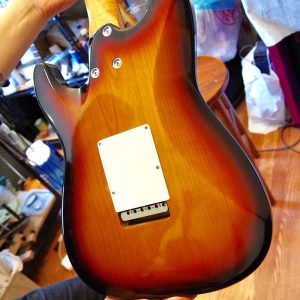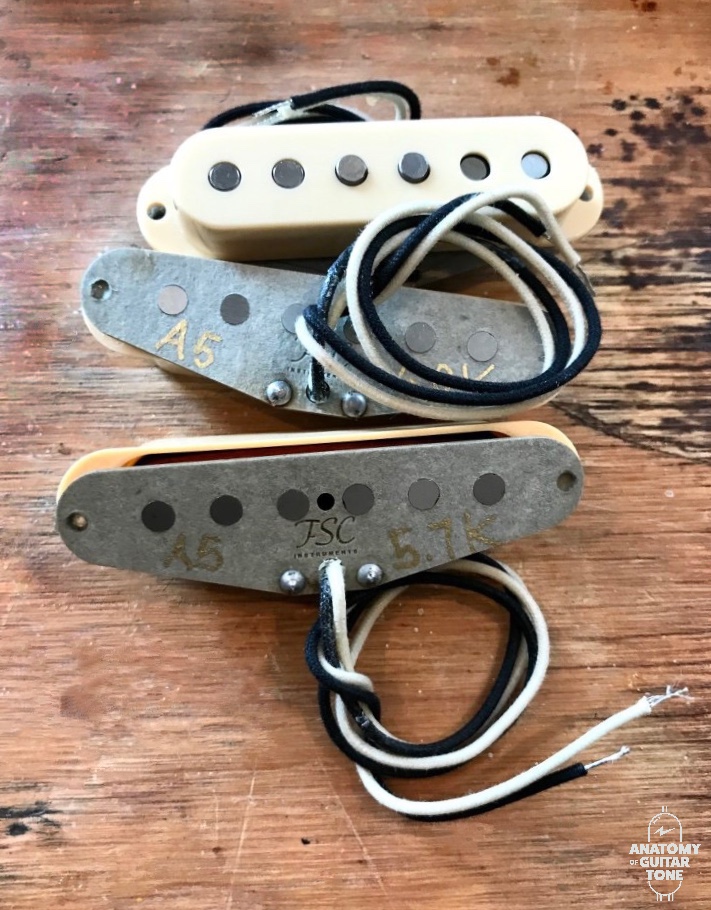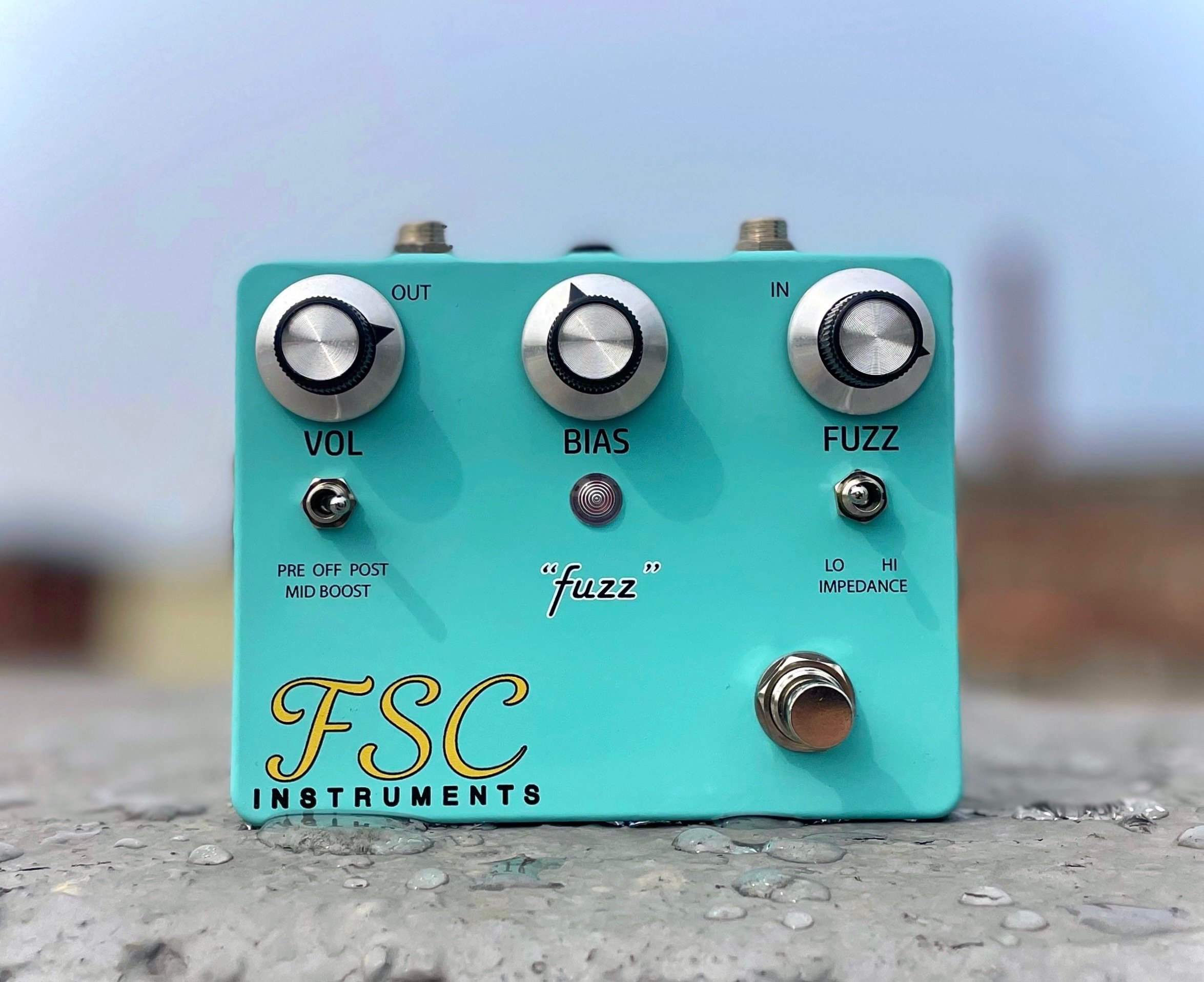FSC Guitars
I recently paid a visit to F.S. Lutherie in Brooklyn, NY. They are a small guitar custom shop specializing in repairs and builds, based in the borough’s Greenpoint section. Owner Farhad Soheili met with me to discuss his new line of custom guitars, FSC Guitars.
Farhad worked for many years as the guitar tech at Ludlow Guitars in Manhattan until deciding to go out on his own. He knows repairs.
Gear Nerd
I’m a self-confessed nut for musical gear that is hand-made and not mass-produced. All of the small details really do matter. That’s not to imply you can’t make great music with a mass-produced guitar. It just means there is some subtlety that gets lost in the assembly line.
This may seem odd, as the original Fender guitars were meant to be assembled fast and affordable.
But times have changed—and Fender has streamlined the process even more and changed the ingredients from its original recipe.
When you buy a modern Fender you’re buying a name. You’re really not buying the same formula that was created long ago by Leo. The pickups are different. The paint is different. As are many other small elements.
If you really want to find a Fender-style guitar that is closer to the traditional sound, you often have to look further than Fender.
That brings us to FSC Guitars. Although Farhad makes Fender-esque guitars, they’re not 100% traditional. They are very much Fenders in regard to tone. But he’s made a few improvements under the hood.
The truss rod adjustment is better than the traditional Allen wrench Fender style. FSC uses a dual-action spoke wheel design. The advantage? It won’t strip and it can be adjusted without an Allen wrench. This is handy for all you gigging guitarists when a quick tweak is needed at a show.
The neck also has two carbon fiber reinforcement rods. One on each side of the truss rod. This keeps the neck straight. Necks can twist a little over time. I’m having that exact issue on one of my Strats right now. The carbon fiber bars prevent that.
Finish
For finishes, FSC uses nitrocellulose lacquer. I’m a fan of nitro, as these fishes tend to be thin. You feel more connected to your instrument and the guitar resonates more. It feels as if it’s breathing.
Most modern Fender guitars use a poly finish, which basically means there is plastic in it. There are a couple of reasons for this. For one, nitro is bad for the environment. Fender mass produces guitars. If they used nitro on all of their guitars it would be bad for Mother Earth.
Secondly, some guitarists get ruffled if their guitar gets a scratch on it. I see a scratch as a rite of passage. It means I’m using it. Poly keeps those players who polish their guitars off twice a day happy, as it’s more resistant to scratches.
Me, I ain’t got no time for polishing. I’m busy playin’ and making memories!
Poly finishes are very durable. But with that durability comes a finish that suffocates your guitar. The closer I can be to the wood vibrating, the happier I am.
Pickups
Farhad winds his own pickups. You may ask how good they are. Here’s a story. He brought a ST-M for me to play at City Winery for Amy Helm’s CD release. I often play a Strat on her gigs as well as an ES-335. My Strat is a 1991 American Standard Strat. I’m quite fond of it. It’s a really great- sounding Strat.
It was nice to be able to compare these guitars at stage volume. This is often when gear gets exposed the most. The FSC was quite open-sounding and seems to have extra harmonics sitting on top of the notes and chords.
After playing the ST-M for the gig, it left me feeling like I was missing something on my Strat. This hasn’t really happened before—and I’ve played a bunch of different Strats.
The FSC was refined. The touch response was instant. It felt like there was less between me and the note coming from the amp.
Farhad’s inspiration for the ST-M is 1959 Strat, which is his favorite year of the Strat. He would know, as he’s repaired many a vintage Strat over the years.
The ST-M’s pickups were lower-output than my Strat’s but more defined. Because of this, they were a better contrast for the Florance PAF-style humbuckers I have in my 335. Seems strange, right?
The lower-output ST-M pickups didn’t need any help when I switched guitars. I’m not saying that there wasn’t a volume difference between the humbuckers and the single coils. I’m saying that the tones complimented each other well.
The pickups on my AM Standard Strat seem less alive. I often need to use a pedal like the Xotic EP Booster to get a little more life into it when pairing it with a humbucker guitar in my rig.
I have to say I missed the ST-M and its pickups for the rest of the tour. I kept feeling like I was missing something in my tone.
So even if you’re not looking to buy a new guitar, some investigation into FSC pickups can greatly improve your tone. Yes, I’ve played many other hand wound pickups. I’m telling ya, these are good!
From Scratch
One thing is clear. Farhad is not just getting some guitar kits and putting them together. He’s making a complete guitar from scratch (minus the tuners and knobs).
This is rare, as some manufactures are really making Parts-casters and marking up the price. FSC’s bodies, necks, and pick guards are all custom cut and shaped.
This means you can choose a neck profile, neck radius, and fret size.
Made to Order
The advantage to talking to someone before building a guitar is that they’ll build it to your specs. FSC isn’t just throwing parts together that don’t have a relationship.
He’s clearly matchmaking. He knows what a good slab of wood sounds like before he cuts it. As he’s slowly building the guitar, he’s taking note of the particular character of that instrument and adjusting as he goes along, keeping your interests in mind.
This doesn’t happen often in a factory and sometimes results in an unbalanced guitar. This is where hands-on construction is crucial.
Meeting with Farhad, it’s clear he’s aware of the personality of each guitar he builds.
The Playing
I’ve played a lot of Strats over the years. So many that it almost makes my eyes glaze over. It’s the most copied guitar in the world.
So I expected FSC’s hand-built guitar to be nice. But I wasn’t prepared for how much I would like it. It was definitely an elevated Strat. It checked all the boxes for me.
It played so evenly. There was a lot of care given to the frets—often an issue on mass-produced guitars. Every fret felt useable and comfortable.
The tone was genuine. When I closed my eyes I felt I was going back in time and playing a newly-constructed Strat from the late ‘50s.
Some modern Strats sound like they need a little help off the line. They seem incomplete without a pedal of some kind. They can be a little generic. The ST-M was far from generic. It’s one of those guitars you can run straight into an amp and be in tonal bliss.
There are no corners cut on this guitar. There isn’t a board of advisers or investors looking for maximum returns on their investments. It’s a small operation that is very dedicated to the art of guitar-making. For the love of the instrument!










